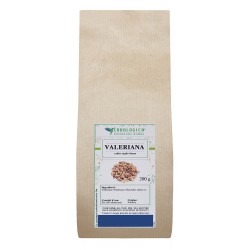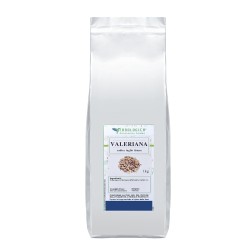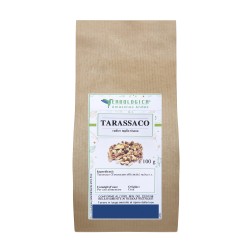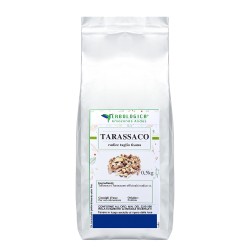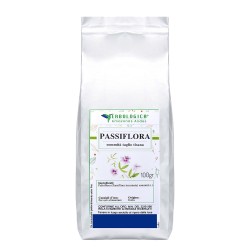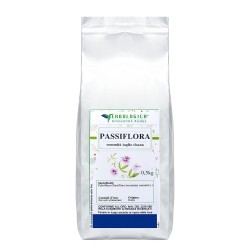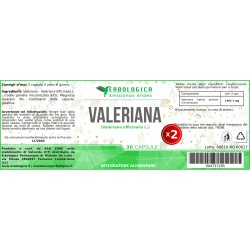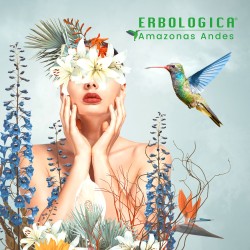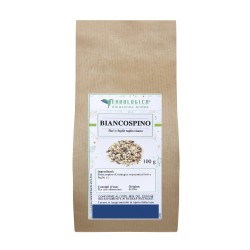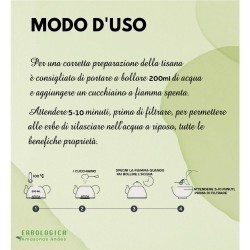
Vischio tisana usi e benefici
Una pianta preziosa della tradizione erboristica che favorisce la circolazione, rilassa la mente e sostiene le difese naturali
Il vischio è una pianta leggendaria che unisce fascino, storia e salute.
Da sempre associato al Natale e alla tradizione del bacio sotto il vischio, questa pianta non è solo un simbolo festivo ma anche un rimedio naturale efficace.
Utilizzato da secoli nella medicina tradizionale, il vischio è noto per le sue proprietà benefiche su cuore, circolazione, sistema immunitario e rilassamento mentale.
Cos’è il vischio e perché è considerato prezioso
Il vischio (Viscum album) è una pianta semi-parassita che cresce su alberi come il melo, il pioppo o la quercia.
Le sue foglie verdi e rametti contengono lectine e viscotossine, sostanze bioattive che sostengono la salute del sistema immunitario e circolatorio.
In fitoterapia viene usato sotto forma di infuso o tisana, come la Vischio foglie e rametti taglio tisana Erbologica, preparata con ingredienti naturali di altissima qualità.
Prova la Vischio foglie e rametti taglio tisana Erbologica, disponibile in confezioni da 100 g, 500 g e 1 kg
Principali benefici del vischio per la salute
1. Rinforza il sistema immunitario
Il vischio stimola le difese naturali dell’organismo e aumenta la capacità del corpo di reagire alle infezioni e allo stress ossidativo.
2. Supporta la circolazione e regola la pressione
I principi attivi del vischio contribuiscono a migliorare la circolazione e a regolare la pressione arteriosa in modo naturale.
Abbinato alla Tisana Biancospino fiori e foglie tisana Erbologica aiuta a sostenere il cuore e il tono venoso.
3. Effetto calmante e rilassante
Le sue proprietà sedative aiutano a ridurre ansia, agitazione e insonnia.
È ottimo insieme alla Tisana Valeriana radice Erbologica o alla Passiflora foglie taglio tisana Erbologica per favorire il rilassamento serale.
4. Azione antinfiammatoria e depurativa
Il vischio aiuta a ridurre le infiammazioni e a depurare l’organismo dalle tossine.
Puoi potenziarne l’effetto con la Ortica foglie taglio Tisana Erbologica o la Tarassaco Radice Taglio Tisana Erbologica.
Proprietà antiossidanti
Grazie ai flavonoidi e ai polifenoli, il vischio contrasta i radicali liberi e contribuisce alla salute delle cellule, migliorando il benessere generale.
Scopri il Vischio foglie e rametti taglio tisana Erbologica e approfitta dei suoi effetti benefici per cuore e mente
Come preparare la tisana di vischio
Porta a ebollizione circa 200 ml d’acqua, aggiungi un cucchiaio di Vischio foglie e rametti taglio tisana Erbologica, lascia in infusione per 10 minuti e filtra.
Si può gustare calda per un effetto rilassante o tiepida come bevanda depurativa.
Acquista la Vischio foglie e rametti taglio tisana Erbologica per preparare un infuso naturale e benefico
Quando bere la tisana di vischio
Si consiglia di bere una o due tazze al giorno, preferibilmente lontano dai pasti.
Un consumo regolare aiuta a regolare la pressione, favorire la circolazione e ridurre lo stress quotidiano.
Precauzioni e consigli d’uso
Come tutte le piante officinali, anche il vischio va assunto con attenzione.
È importante utilizzare solo prodotti controllati e di alta qualità come quelli di Erbologica, ed evitare l’uso in gravidanza o durante terapie anticoagulanti.
Domande frequenti
Posso bere la tisana di vischio tutti i giorni?
Sì, in dosi moderate (1–2 tazze al giorno) è sicura e benefica.
La tisana di vischio aiuta a regolare la pressione?
Sì, favorisce la dilatazione dei vasi sanguigni e il corretto flusso circolatorio.
Posso berla la sera?
Certamente, il vischio ha anche un effetto rilassante che favorisce il sonno.
Si può combinare con altre tisane?
Sì, si abbina perfettamente con la Tisana Biancospino o la Tisana Valeriana.
La Vischio foglie e rametti taglio tisana Erbologica è una bevanda naturale, benefica e rilassante, ideale per chi desidera prendersi cura della propria salute in modo dolce e naturale.
Dal cuore alla mente, una tazza di vischio al giorno porta equilibrio, calma e benessere.


